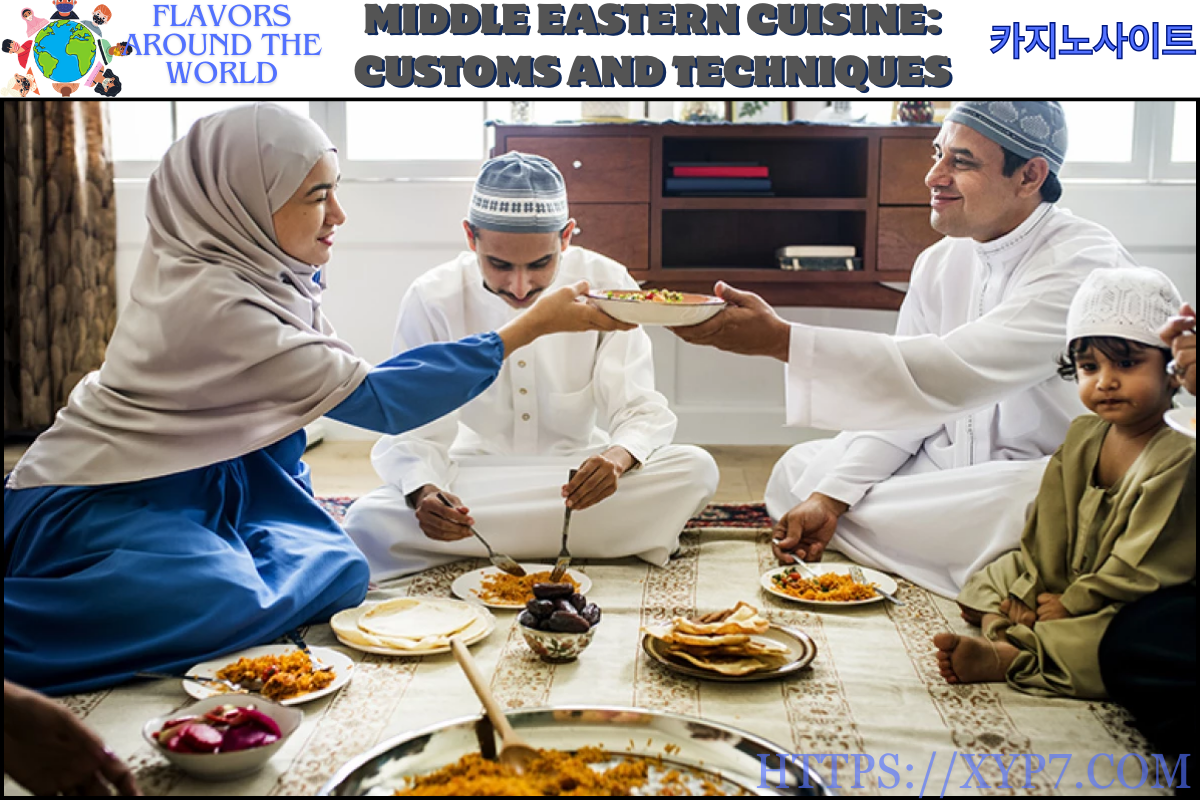Middle Eastern Cuisine: Customs and Techniques. You have experienced the delicious world of Middle Eastern cuisine if you have ever relished falafel, hummus, or pita bread. But the food offers a variety of flavors and styles, so it’s much more than just these famous mainstays.
The cuisine is a fantastic place to start if you’re of Middle Eastern descent or want to learn more about the area. Genuine cuisine from any particular location contains more than just flavors. It offers perceptions into both the history of the area and the life of its inhabitants.
RELATED: Recipe for Veggie Bulgur Salad

What Food Is Listed as Middle Eastern?
The cuisine of the Middle East is derived from numerous cultures that surround the Red, Arabian, Mediterranean, and Caspian seas. Among them are the cuisines of the Arab, Israeli, Moroccan, Syrian, and Turkish peoples. In actuality, a wide range of nations and civilizations are covered.
Although there are many different types of Middle Eastern cuisine, aromatic and abundant spices, nuts, olive oil, and creamy ingredients are often found in the cuisine. Traditional meats include goat, lamb, and mutton. Though less frequently, pig, fish, cattle, camel, and chicken are all utilized.
Typical Middle Eastern Cuisine
Modern farming and cookery were made possible by the Middle Eastern early civilizations. This region of the world was among the first to cultivate plants and raise agricultural animals, such as sheep, goats, cattle, and wheat. The fermentation technique, which has been used by cultures all over the world to leaven bread, produce alcohol, and generate distinctive flavors, was also invented by Middle Easterners.
With the expansion of international trade over the years, the Middle East emerged as a center for the exchange of products and cultures due to its strategic location between Europe, Asia, and Africa. The trade of foodstuffs, spices, and new recipes shaped the cuisine of the Middle East and its neighboring regions.
A Month of Fasting During Ramadan
In Islamic tradition, Ramadan is a holy month dedicated to fasting. It has close spiritual ties to the Qur’an and is significant to Muslims worldwide. Muslims fast from sunrise to sunset during the month, only eating after sunset prayer.
The next evening meal is frequently a communal gathering in homes or mosques. Due to daily fasts, stores and eateries remain open late, resulting in a bustling evening. Muslims are alerted to eat their final meals before the following day of fasting by the sound of drums and bells early in the morning.
Middle Eastern Mealtime Etiquette
In the Middle East, dining etiquette varies by location, making it challenging to establish strict guidelines. Food is typically served by the host or shared from a single, communal plate. If you are being served food by a host, be ready to accept second helpings as soon as your dish is cleared. You may indicate that you’re full by leaving some food on your plate.
Utensils are not always utilized in Arab countries because finger meals are usually preferred there. Certain places, like Turkey, do utilize cutlery. Arab nations also refrain from using the left hand when eating since it is customarily associated with performing unsanitary duties. In certain areas, low tables and floor cushions are also typical 카지노사이트.
